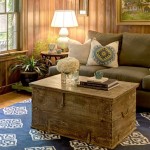How To Decorate a Small Bedroom With One Window
Decorating a small bedroom, particularly one with a single window, presents a unique set of challenges and opportunities. The limited square footage demands careful consideration of space-saving strategies, while the single window becomes a focal point for light and perspective. Successful design in this context hinges on maximizing natural light, creating an illusion of spaciousness, and optimizing functionality without sacrificing personal style. A well-planned approach, attentive to color palettes, furniture selection, and strategic décor placement, can transform a cramped room into a comfortable and aesthetically pleasing sanctuary.
The inherent constraints of a small bedroom often lead to clutter, which further exacerbates the feeling of confinement. Therefore, organization and minimalism become paramount. Every item within the room should serve a purpose, either functional or aesthetic, and contribute to the overall sense of harmony. Before embarking on any redecoration efforts, consider decluttering thoroughly, discarding or storing items that are no longer needed or used. This process will free up valuable space and provide a clearer canvas upon which to build the desired design.
The single window, although a significant asset, requires thoughtful treatment. Its position and size will dictate the amount of natural light entering the room, influencing the choice of window coverings and the placement of furniture. Maximizing the light penetration is crucial to creating a brighter and more inviting atmosphere. The window should also be leveraged to create a sense of connection to the outside world, blurring the boundaries between the interior and exterior.
Optimizing Natural Light Through Window Treatment and Placement
The selection of window treatments plays a critical role in controlling and maximizing natural light in a small bedroom with a single window. Heavy, dark curtains should generally be avoided, as they can block out a significant amount of light and visually shrink the space. Opting for lightweight, sheer curtains made from materials like linen or voile allows sunlight to filter through while maintaining a degree of privacy. These fabrics diffuse the light, creating a soft and airy ambiance.
Alternatively, blinds or shades can offer greater control over light levels. Roller shades or Roman shades are excellent choices, as they can be fully retracted to maximize light during the day and lowered to provide privacy at night. Light-colored blinds, such as white or beige, will reflect more light back into the room, further enhancing the sense of spaciousness. Consider installing the blind or shade slightly above the window frame to create the illusion of a larger window and to allow for more light to enter from above.
The placement of furniture around the window should also be carefully considered. Avoid blocking the window with large pieces of furniture like bulky wardrobes or tall dressers. Instead, position lower items, such as bedside tables or a small desk, near the window to allow light to penetrate deeper into the room. If space allows, placing a mirror opposite the window can effectively double the amount of light and create a more expansive feel. The mirror will reflect the light and the view outside, making the room appear larger and brighter.
Furthermore, maintaining a clean and uncluttered windowsill is crucial. Avoid piling up books, plants, or other decorative items on the windowsill, as this can obstruct the flow of light. A few carefully chosen decorative objects, such as a small vase or a single potted plant, can add a touch of personality without compromising the amount of light entering the room. Regularly cleaning the window itself will also ensure optimal light transmission. Dirt and grime can significantly reduce the amount of light that passes through the glass, diminishing the brightness of the room.
Creating Visual Space Through Color Palettes and Strategic Decor
Color is a powerful tool in interior design, and its strategic use can significantly impact the perceived size and feel of a small bedroom. Lighter colors reflect more light and create a sense of spaciousness, while darker colors tend to absorb light and make a room feel smaller and more enclosed. Therefore, opting for a light and airy color palette is generally advisable for small bedrooms. White, off-white, pastel shades, and light neutrals are all excellent choices for walls, ceilings, and floors.
While a predominantly light color scheme is recommended, adding pops of color can prevent the room from feeling sterile or bland. Accent colors can be introduced through decorative pillows, throws, artwork, or small pieces of furniture. However, it is important to use these accent colors sparingly to avoid overwhelming the space. Focus on a limited color palette of two or three complementary colors to maintain a sense of harmony and balance.
The judicious use of mirrors is another effective way to create the illusion of more space. As mentioned earlier, placing a mirror opposite the window can double the amount of light and reflect the view outside. Large mirrors can also be used to create the illusion of a longer or wider room. Consider hanging a full-length mirror on a wall, or incorporating mirrored doors on a wardrobe to visually expand the space. Ensure mirrors are placed strategically to reflect light and open up the room, rather than reflecting clutter or dark corners.
In terms of décor, adopting a minimalist approach is key. Avoid overcrowding the room with excessive decorations and accessories. Focus on a few carefully chosen pieces that add personality and style without overwhelming the space. Wall art should be kept to a minimum, and larger pieces tend to be more effective than multiple smaller ones. Consider hanging a single, impactful piece of artwork or a gallery wall of a few carefully curated prints.
Vertical space should also be utilized to maximize storage and visual interest. Tall, narrow bookshelves or floating shelves can provide storage without taking up valuable floor space. Hanging plants can also add a touch of greenery and visual height to the room. When choosing furniture, opt for pieces with clean lines and simple designs. Avoid bulky, ornate furniture that can visually weigh down the space. Choosing furniture with legs can also create a sense of lightness, as it allows more of the floor to be visible.
Optimizing Functionality Through Space-Saving Furniture and Storage Solutions
In a small bedroom, every piece of furniture must be carefully considered for its functionality and space-saving potential. Multi-functional furniture is a particularly valuable asset, as it can serve multiple purposes and reduce the need for additional pieces. For example, a bed with built-in storage drawers underneath can provide valuable space for storing bedding, clothing, or other items. A storage ottoman can serve as both a seat and a storage container.
Wall-mounted shelves are an excellent way to maximize storage without taking up valuable floor space. They can be used to store books, decorative items, or even clothing. Floating shelves create a clean and minimalist look, while traditional shelving units can provide more substantial storage. When choosing shelves, consider the depth and height of the shelves to ensure they are appropriate for the items being stored.
Consider using a slim bedside table or even a floating shelf as a bedside table to save space. Choose a bedside lamp that can be mounted on the wall to save space on the table. Wall-mounted lighting frees up surface area and provides a clean, modern aesthetic. Choose a design that complements the overall style of the room and provides adequate light for reading or other activities.
The closet is another area where space can be maximized through efficient organization. Utilize vertical space by installing shelves or hanging rods that reach the top of the closet. Consider using storage bins or baskets to organize smaller items. Decluttering the closet regularly and removing items that are no longer needed or used can also free up valuable space. Employing space-saving hangers, like velvet hangers, will also reduce bulk and allow more items to fit in the closet.
Finally, consider the overall flow of the room. Ensure that furniture is arranged in a way that allows for easy movement and access. Avoid placing furniture in front of the door or window, as this can obstruct the flow of traffic and make the room feel cramped. A well-planned layout will maximize the functionality of the room and create a more comfortable and inviting space. Prioritizing functionality and opting for space-saving solutions ensures that the small bedroom, despite its limited dimensions, remains a practical and pleasant environment.

Bedroom 1 2 Bed Against Window Wall Small Guest Inspirations

I Need White Windows Small Bedroom Inspiration Tiny Design

Small Bedroom Decorating Ideas On A Budget Four Generations One Roof

Small Bedroom Ideas 21 Ways To Live Large In Your Space Bob Vila

60 Unbelievably Inspiring Small Bedroom Design Ideas
50 Nifty Small Bedroom Ideas And Designs Renoguide N Renovation Inspiration

8 Ways To Make Small Spaces Feel Bigger Instantly

Easy Creative Bedroom Basement Ideas Tips And Tricks Remodel Window Design Small

60 Unbelievably Inspiring Small Bedroom Design Ideas

Small Bedroom Ideas 21 Ways To Live Large In Your Space Bob Vila







